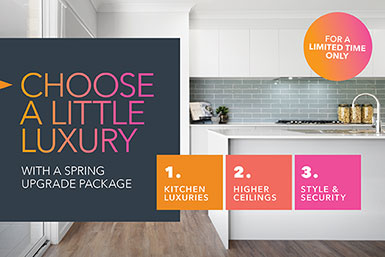Forward Thinking
Three must add items to your new home build that keep future costs down
One of the worst things that can happen when you have moved in and settled down in your new home is that it starts to feel like an obligation rather than a retreat. The building starts to move ever so slightly causing warping, sticky windows and jammed doors, large electrical bills keep coming in due to ineffective insulation, wear and tear means continual upkeep and constant work around the house – the continual domestic nightmare that comes with home ownership. This weeks blog centres around items that you can include during your build or renovation to save you from the nightmare and ensure longevity of your home in South East Queensland. Keep it looking and feeling like a home not a nightmare.
Solar Power
Living in Queensland, we have the good fortune to have brilliant sunshine almost all year round so why not consider solar? Up front it will cost you between $3,000 and $15,000 depending on system size. We recommend going with the 5.5kw system for a standard family home (and no pool). As this will cover the cost of day time running plus have a bit left over to feed back to the grid so you can collect on the solar rebate and let your system partially pay for itself. A reduced electricity bill plus cash back for feeding the grid? Solar is a no brainer for all homes let alone new builds. Solar will also get infinitely better once more cost effective batteries reach the residential market allowing your solar power to be stored and power your home at night and on rainy days. Right now a Tesla Powerwall and 5.5kw system will set you back close to $15,000 for product and installation. Keep a careful watch out though, they will start to decrease in cost in the near future.
Steel Framing
If you’re building from scratch, then we recommend going with a steel frame. There is very little price difference between steel and timber frames these days and the benefits far outweigh the minimal price difference.
1. Steel is termite and rot resistant
If you are building your home in an area where the soil is moist and termites are not just a fairy tale then steel is the way to go. These little nasties can’t chew through metal!
2. Steel doesn’t warp
This means your home retains its shape much longer than timber. Windows will continue to open and close easily, doorways will be jam free, rooflines won’t wave and little to no cracks in plasterboard & cladding.
3. Steel as more design possibilities
It can be used to create larger open spaces due to it’s strength over longer spans (think aeroplane hanger as an example) and it can be moulded into any shape (think curved walls). It’s also easier to renovate with for those future expansions.
4. Steel is a green product - 100% recyclable
It can be recycled an infinite amount of times and is usually already made up of approximately 20% recycled steel - check out this planet ark fact sheet for more info.
To quote the guys at Truecore steel, the key to a beautifully finished home is the way it starts and they may be on to something.
Whirlybird
A what now? A whirlybird or one of those spinning things you see on some house roofs but more commonly spread all over the roof of industrial buildings. Whirlybirds, while often a forgotten product, can really help with keeping bills down. Why? The air in your roof cavity, in a state like Queensland, can reach temperatures as high as 60 degrees. Now combine that with the humidity we are famous for and you have a sticky wicket in your roof to be sure. A whirlybird has the job of ventilating the roof by drawing out the hot air. This removes or minimises issues that occur with;
- mould
- mildew
- dry rot
- damp insulation
- heat radiating down from the roof
What does this mean for your power bill? Well with no damp insulation and reduced heat, your insulation can do its job by insulating the air in your home meaning your air-conditioner does not have to work as hard to cool or heat the house. A reduction in energy bills for running the air-con or a reduction in the amount of solar used which can then be directed elsewhere you say? Hallelujah! Plus there is the extra obvious, withdrawal of air reduces and minimises mould, mildew and dry rot issues in your roof. We’ll take 4 whirlybirds thanks!
We hope that this food for thought has helped all people starting out on their new home build to think even more about how to keep your home running costs down and your home feeling like a retreat rather than a drain.
Happy Building!




